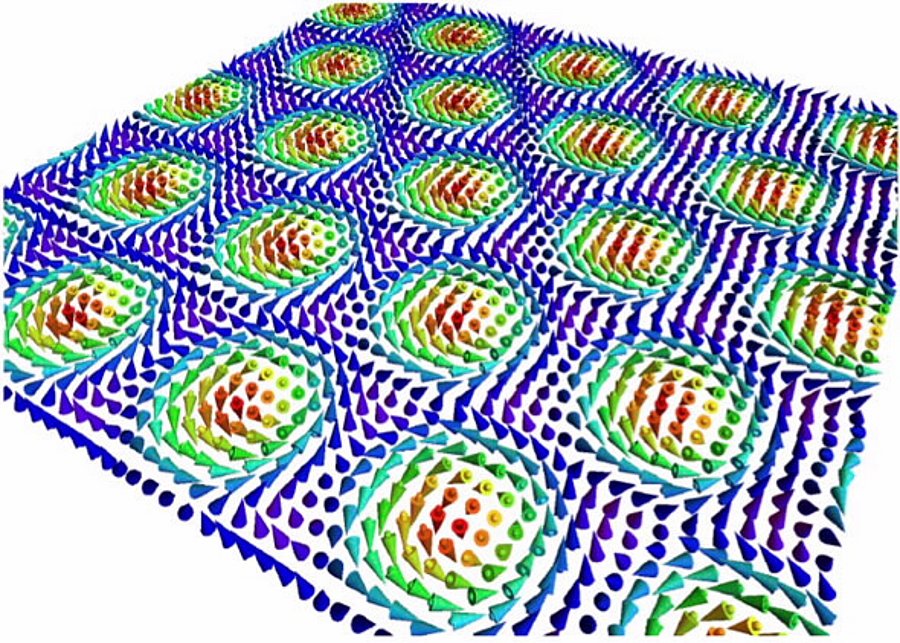Kolloquium am 12.12.2022

Im Rahmen des physikalischen Kolloquiums spricht am Montag den 12.12.2022
Prof. Dr. Markus Garst (KIT)
über:
,,Magnetic Skyrmion Strings: How They Bend, Twist and Vibrate''
alle sind herzlich eingeladen!
Abstract zum Vortrag:
Topological strings are effectively one-dimensional objects that can be found in diverse
systems such as domain walls in magnetic films, vortex filaments in fluids or, potentially,
cosmic strings in the universe. Usually, these stringlike objects can elastically bend and
twist, and this elasticity also determines their dynamical behavior at low energies. A
particular example are magnetic skyrmions that are smooth topological textures of the
magnetization that are localized within a two-dimensional plane. They arise in magnetic
systems that lack inversion symmetry where they are stabilized by the Dzyaloshinskii-
Moriya interaction. In bulk materials, magnetic skyrmions extend in the third direction
forming an effective string.
These strings can be dynamically excited resulting in various vibrational modes. We
provide an overview of the dynamics of skyrmion strings [1], that can be found in chiral
magnets like MnSi or FeGe, and we compare theoretical predictions with magnetic
resonance spectroscopy [2], spin-wave spectroscopy [3], inelastic neutron scattering [4]
and Brillouin light scattering. At high energies, the spin-wave dynamics is governed by
an emergent orbital magnetic field that is directly linked to the topological density of the
skyrmions giving rise to magnon Landau levels. At low-energies the dynamics is
determined by an effective elasticity theory. We show that a single string supports non-
linear solitary waves [5] similar to vortex filaments in fluids.
[1] M. Garst, J. Waizner, and D. Grundler, J. Phys. D: Appl. Phys. 50, 293002 (2017).
[2] T. Schwarze et al., Nat. Mater. 14, 478 (2015).
[3] S. Seki et al., Nat. Commun. 11, 256 (2020).
[4] T. Weber et al. Science 375, 1025 (2022).
[5] V. P. Kravchuk et al., Phys. Rev. B 102, 220408(R) (2020).
Picture Credit: Yoichi Nii
